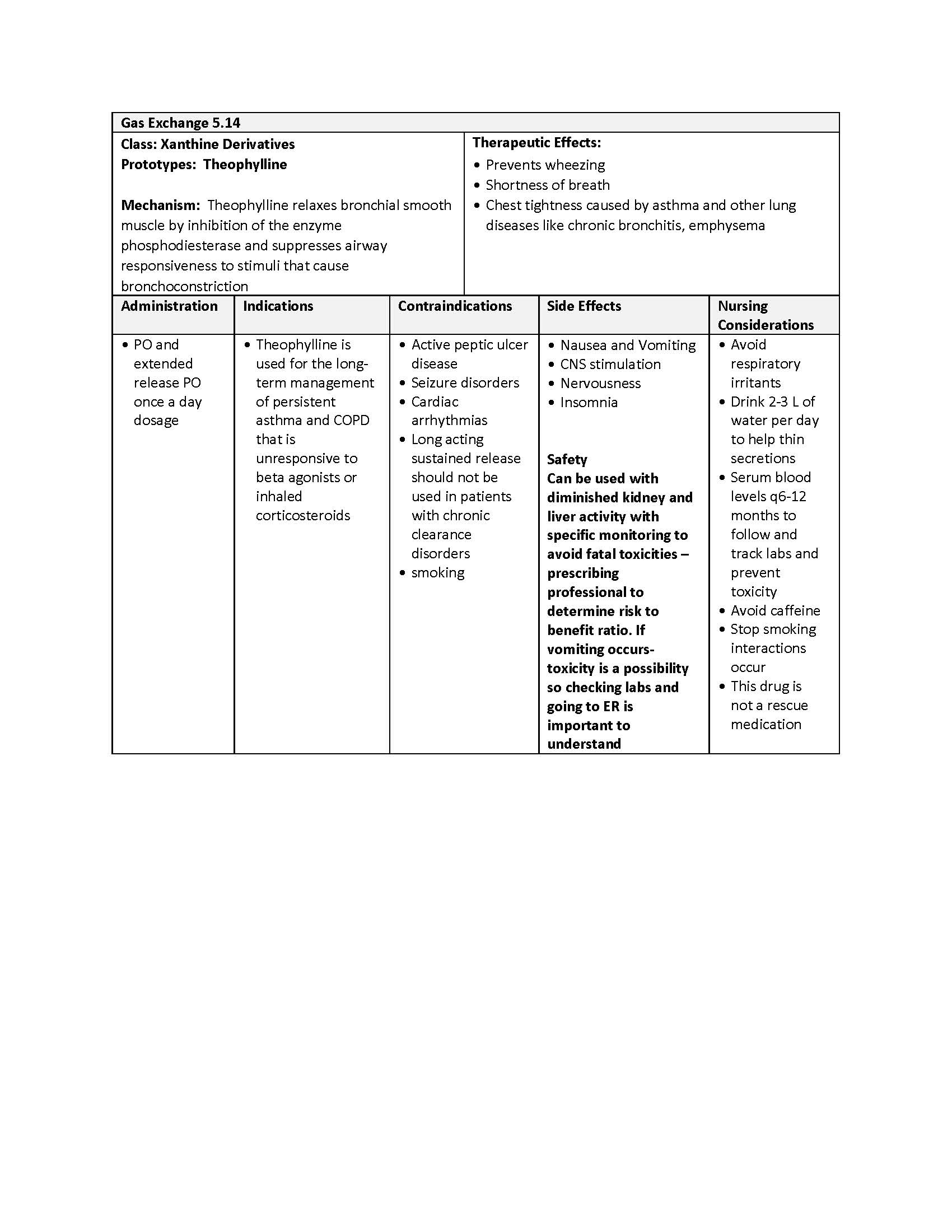Gas Exchange
5.14 Xanthine Derivatives
Open Resources for Nursing (Open RN)
Xanthine Derivatives
Theophylline is a xanthine derivative.
Mechanism of Action
Theophylline relaxes bronchial smooth muscle by inhibition of the enzyme phosphodiesterase and suppresses airway responsiveness to stimuli that cause bronchoconstriction.
Indications for Use
Theophylline is used for the long-term management of persistent asthma that is unresponsive to beta agonists or inhaled corticosteroids.
Adverse/Side Effects
Theophylline can cause nausea, vomiting, CNS stimulation, nervousness, and insomnia.[1]
Nursing Considerations Across a Life Span
The long term use of these drugs with childhood asthma needs to be reassessed. Although for alleviating symptoms in children they are considered a first line preventer, evidence questions the reliability of these drugs. Currently, used as prescribed by a medical professional, they are deemed safe, however as research advances these indications may change. Further research is indicated.
Client Teaching & Education
Clients should be sure to take medications as prescribed and at appropriate intervals. They should avoid irritants and drink fluids to help thin secretions. Clients will need to have their serum blood levels tested every six to twelve months.[2]
Now let’s take a closer look at the medication card on theophylline in Table 5.14.[3], [4],[5]
Table 5.14 Theophylline Medication Card

Media Attributions
- XD
- Frandsen, G. & Pennington, S. (2018). Abrams’ clinical drug: Rationales for nursing practice (11th ed.). Wolters Kluwer. ↵
- uCentral from Unbound Medicine. https://www.unboundmedicine.com/ucentral ↵
- This work is a derivative of Pharmacology Notes: Nursing Implications for Clinical Practice by Gloria Velarde licensed under CC BY-NC-SA 4.0. ↵
- Frandsen, G. & Pennington, S. (2018). Abrams’ clinical drug: Rationales for nursing practice (11th ed.). Wolters Kluwer. ↵
- This work is a derivative of Daily Med by U.S. National Library of Medicine in the public domain. ↵

